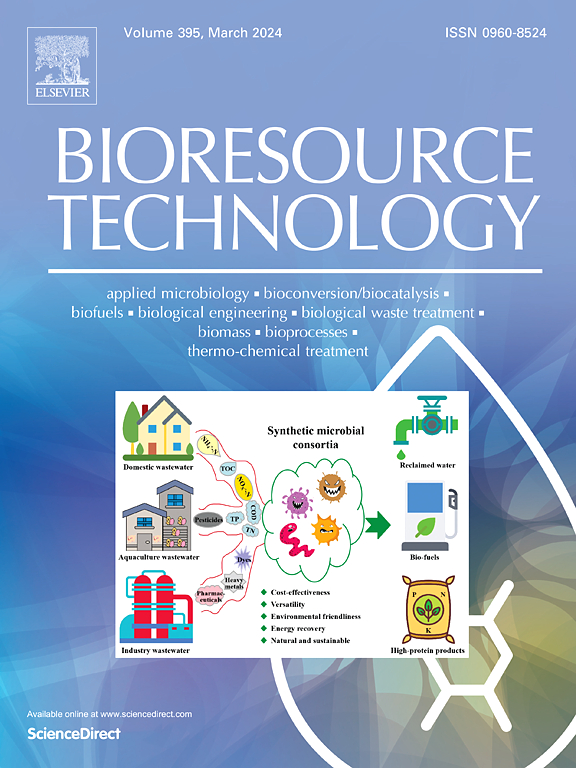Highly-efficient co-production of microbial lipid and magnesium ammonium phosphate from N-acetyl-D-glucosamine
IF 9.7
1区 环境科学与生态学
Q1 AGRICULTURAL ENGINEERING
引用次数: 0
Abstract
The valorization of chitin-rich wastes into chemicals and biofuels holds immense economic and environmental benefits. Here, N-acetyl-D-glucosamine (GlcNAc), the basic structural unit of chitin, was firstly described for co-producing microbial lipid and magnesium ammonium phosphate (MAP). Due to the strong substrate inhibition of GlcNAc, a fed-batch culture mode was successfully adopted to achieve high cell density by Cutaneotrichosporon oleaginosum. When a phosphate limitation strategy was applied, cell mass, lipid titer, content, yield, and productivity were 102.7 g/L, 74.2 g/L, 72.2 %, 21.4 g/100 g, and 0.69 g/L/h, respectively. The ammonium ion was efficiently precipitated by forming MAP with a removal rate around 95.4 %. The lipid samples showed high similarity to vegetable oil, which emerged as high-quality precursor for biodiesel production. This study offers a promising strategy for full conversion of GlcNAc into lipid and slow-release fertilizer, which provides an attractive technical route for turning the chitin-rich materials into valuable products.

从 N-acetyl-D-glucosamine 高效联合生产微生物脂质和磷酸铵镁。
将富含甲壳素的废弃物转化为化学品和生物燃料具有巨大的经济和环境效益。本文首次描述了甲壳素的基本结构单元--N-乙酰-D-葡糖胺(GlcNAc)在微生物脂质和磷酸铵镁(MAP)共生中的应用。由于 GlcNAc 对底物有很强的抑制作用,Cutaneotrichosporon oleaginosum 成功地采用了分批进行培养的模式来实现高细胞密度。当采用磷酸盐限制策略时,细胞质量、脂质滴度、含量、产量和生产率分别为 102.7 g/L、74.2 g/L、72.2 %、21.4 g/100 g 和 0.69 g/L/h。形成的 MAP 能有效沉淀铵离子,去除率约为 95.4%。脂质样品显示出与植物油的高度相似性,成为生产生物柴油的优质前体。这项研究为将 GlcNAc 完全转化为脂质和缓释肥料提供了一种有前景的策略,为将富含甲壳素的材料转化为有价值的产品提供了一条有吸引力的技术路线。
本文章由计算机程序翻译,如有差异,请以英文原文为准。
求助全文
约1分钟内获得全文
求助全文
来源期刊

Bioresource Technology
工程技术-能源与燃料
CiteScore
20.80
自引率
19.30%
发文量
2013
审稿时长
12 days
期刊介绍:
Bioresource Technology publishes original articles, review articles, case studies, and short communications covering the fundamentals, applications, and management of bioresource technology. The journal seeks to advance and disseminate knowledge across various areas related to biomass, biological waste treatment, bioenergy, biotransformations, bioresource systems analysis, and associated conversion or production technologies.
Topics include:
• Biofuels: liquid and gaseous biofuels production, modeling and economics
• Bioprocesses and bioproducts: biocatalysis and fermentations
• Biomass and feedstocks utilization: bioconversion of agro-industrial residues
• Environmental protection: biological waste treatment
• Thermochemical conversion of biomass: combustion, pyrolysis, gasification, catalysis.
 求助内容:
求助内容: 应助结果提醒方式:
应助结果提醒方式:


